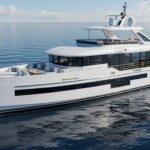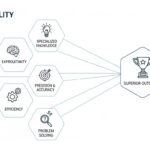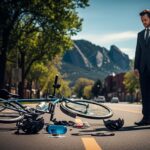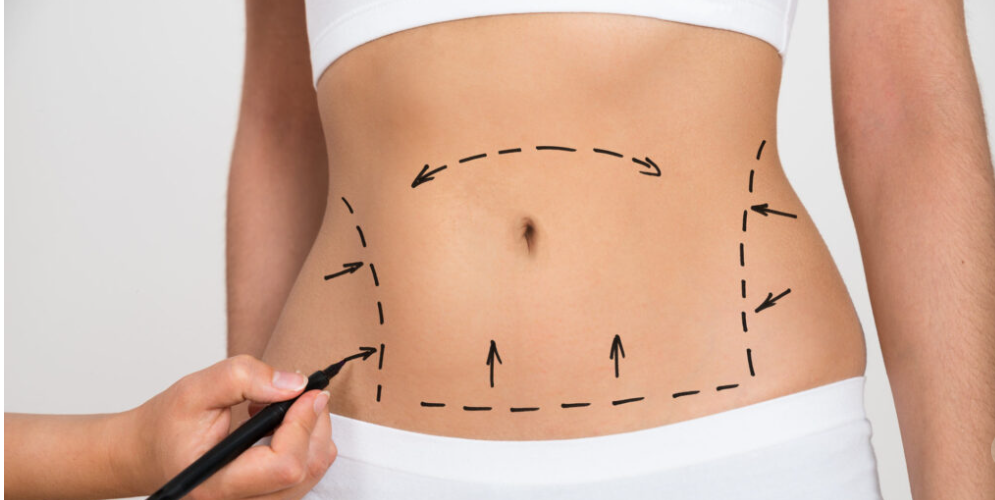What is your research process like?
I just go to the library and get lost. I walk almost unconsciously through the isles, stop when my spirit tells me, and grab the book that I’m “looking” for. After gathering about 10 books or so, I have everything to help me come to a conclusion on what I want to say in my work. After the books, I speak with “random” people in my community to get their opinions and ideas about the whatever the topic is. Funny enough, this usually confirms my thoughts. After that, I watch documentaries and news stories to inform myself visually and to stay up to date.
In what ways have you found that we glorify war?
Glorification of wars and war heroes are all around. I see it in movies like Troy and 300. Kids are getting rewarded for kill streaks online everyday. I saw many Republicans during the campaign bringing veterans on stage to talk about our nation’s good vs the evil brown people of the Orient. Our president, Trump, is trying to fight a war of attrition against ISIS, another good v. evil case. ISIS glorifies its martyrs and soldiers in this so called “holy Caliphate v evil Crusaders” war.
Tell me about the significance of the materials you use for Glory, and how you apply them onto canvas. (I imagine that this process is a performance piece in itself!)
It was a performance! I laid the work out on the floor, spilled paint on it to stain the canvas, and used a broom to paint the rest in. After, I spit on it and slopped mud everywhere. Then I finished it off with glitter. I actually got fired from my job while working on that piece because of the mess I made. My boss was pissed.
Haha, anyways, I used mud, blood red paint, and spit in the areas that represent the battlefield. The blue areas are filled with glitter and the figures are almost like constellations in the night sky. To me it’s a timeless heaven and earth view of the Battle of Gaugamela plains, Iraq and the current battles going on in the same area of Mosul, in our times.
The figures in the work are holding the traditional weaponry of Persian and Macedonian warriors. In many areas you can see the Macedonian battle technique of the phalanx being used by the figures. There are other symbols in the work, and they refer back to Picasso’s Guernica; the fallen horse, the slain warrior with the broken blade, the flowers and the black bird in the top right.
What would a battle stage map of the last decade look like for the US? What materials would you use to represent this?
Great question! I’m actually about to take a hard look at America with my next series. The work I’m thinking about creating most likely wouldn’t be a battle map. The works will look like ancient Egyptian artifacts. It would be made of scrap metal, concrete, wood, denim, old auto parts, American flags, anything that could represent the absolute death of America’s Industrial Age. I’d also like to talk about big businesses, gangs violence, American history and ideology; our role in the world. It would be riddled with transfer prints of the recent riots in this country, and figures and images of old industrial cities like Detroit. My ideas are pretty rough at the moment, but that’s the direction I want to head in next. It’ll probably be a 2 year project made out of multiple bodies of work that focus on different subjects like industry, agriculture, ideology, race, politics, and societal movement.
You’ve scattered silhouettes throughout this body of work, as if they’re peering into our world. Tell me a bit about mixing the abstract with the figurative.
Haha! They’re there to watch the viewers. I only include them when the time is right though. Like when a brush stroke does not carry the emotional weight of seeing a human locked in combat.
Thank you, Nazish! Soooo many all-nighters in the studio. A lot of “Watch the throne.” And a ton of frustrating moments. It was fucking amazing! I like having a fire under my ass when I work.
Thanks for taking a look at everything, Nazish! This is going to sound boring, but agriculture, hunting, and food is my dream subject! I want to cover it so badly. If you control food, you control the world. I believe that crops and livestock are the only thing on this planet with intrinsic value. One ear of corn can produce fifty more. I’d probably talk about farming throughout history, slaves from around the world, what people grow all across the planet, hunting, gathering, and how it’s shaped their food, culture, and modern society. It’d be a lifetime’s journey around our planet.
Exhibition Dates | Feb 3rd – Mar 24th, 2017
Gallery Hours | Mon – Fri 8:30am – 5:30pmNorfolks Arts Offsite Gallery
1st Floor, World Trade Center
101 W. Main St, Norfolk, VA 23501
664-6854
John Wolf of Human Condition
How did Human Condition come together? What was the process like?
The Human Condition stemmed from a personal desire to feel emotion. I had a shortlist of figurative artists that elicited a visceral feeling to me. At the moment of inception, I did not have a physical space for the show. It was when a client of mine mentioned the acquisition of the abandoned hospital that a light bulb illuminated. Upon viewing the space I knew that it was within these walls that previously stored so much human emotion I would find a great fit for the show.
No! I initially thought maybe 20 artists. The space is so big, I couldn’t stop, there were too many great works to display, so I kept going, finally capping it at 87 😉What were some frustrations that you encountered?
There were the day-to-day curatorial frustrations of artists whose works were not available, or the short timeline being a hinderance, but ultimately my own inner doubts that were the most frustrating. I chose not to listen to them, and forged ahead, not knowing if anyone would come see the show. Turns out people came 😉 2000 people on opening night.
Yes, it will be even more immersive and intense, a surprise, so no spoilers!
What do you see through the lens of this role in the contemporary art world that you may not have otherwise known about?
People are craving a different experience. The white walls of a gallery have gotten tired. The site specificity of unique exhibitions like this are what excites younger generations to educate themselves on the art world.
What is your role as an art broker?
As a private art dealer, I assist clients in creating outstanding collections based on pre-defined goals. I work in contemporary, post-war, and emerging. I work tirelessly to source the best works for clients, whether new to collecting or established.
What is something every artist should know, from an art broker’s perspective?
Kindness and being really cooperative will get you everywhere. You have to earn your stripes just like anyone else. No one owes you anything just because you’re an artist. Your ego is not your amigo. Share.
When or how did you decide to pursue a career in the arts?
I was a collector and passionate about art, educating myself at every chance I could get. It was an organic process to become an advisor as I was being asked by myriad friends and colleagues for advice. It was shortly after I realized I could make a living doing it!
Anytime there is dramatic political change, artists and culture rise up in response. Whether with blatant statements, or with process change and enhanced creativity – there will be a surge of new work that is truly inspirational. Whatever your opinion on the new president, one thing is certain – disruption will take place, and positive movement in the art world, and I believe, enhanced investment in buying work.
GROWTH / DECAY -Review
Review by Danielle Schlunegger-Warner
Growth/Decay was co-curated by Susannah Kelly and Neil Perry of Antler Gallery with Sara McCorriston and Jason Chen from Paradigm Gallery. Both Galleries were started by artists and enthusiasts that wanted to create a space for building community and showing the work of emerging artists. Growth/Decay was a great opportunity for artists to gain exposure in a new city and broaden their network of fellow emerging and established artists. I believe it is also a good push for galleries to show work by new artists and reengage viewers by refreshing their rosters. While I still loved pieces by artists that both galleries had shown before, I was personally delighted to learn about Michelle Konczyk’s stunning works in watercolor, as well as Nick Pedersen’s surreal digital environments. I am looking forward to seeing this model used more in galleries across the country and internationally.
The opening at Antler drew a large crowd staying packed all evening for Alberta St.’s Last Thursday art walk in Portland. While attending the opening I had the opportunity to speak with the curators and a few of the artists visiting from Philadelphia. Sara McCorriston explained to me that when the two galleries were conceiving the show, they needed to find a theme broad enough that could facilitate two pieces from all the artists. “We gave each other the opposite theme… I see Antler as more of a ‘growth’ gallery, and Paradigm leans more towards themes of decay… ”
The abundance of flowers and animals that were present in these artworks and previous exhibitions show the curators’ draw to artists working with themes of nature. This is certainly a true for Antler Gallery. David Rice, Christina Mrozik, Brin Levinson, and Zoe Keller are just a few examples of artists that speak to artists’ connection with nature and their reaction to human led climate change. While still within the themes of nature, Paradigm generally seems to curate towards the breakdown, complexities, and the absurdities of being human in a natural world by bringing in artists like Drew Leshko, Caitlin McCormack, Nick Penderson and Jeremy Hush to their roster.
Press Release
Paradigm Gallery and Antler Gallery are excited to present a co-curated group exhibition which spans two themes and two cities, with an opening reception on each coast. Both galleries invited 16 artists, asking them to make two pieces tackling the themes of Growth and Decay.
We live in a time when progress and destruction — physical, economic, and sociological — seem to go hand in hand. This theme opens up space to consider the binary nature of the world we live in. The theme was selected as we felt it was universal enough to be explored by the vast majority of artists yet also offered a distinct duality which fulfills the desire to open different shows in each city. Both aspects of the theme needed to be cohesive with the other but also be able to stand alone as its own show in isolation, as all of the “Growth” works will be on display in Philadelphia at Paradigm Gallery and all of the “Decay” works will be on display at Antler Gallery in Portland, with openings less than one week apart. The works may be viewed as stand alone pieces, but many also serve as diptych works.
Holiday Spotlight: Jennifer Huang and Danielle Schlunegger
Jennifer Chen-Su Huang
Here’s a look into her work:
Has writing for Venison influenced your art in any way?
I’m not sure that it has especially influenced my art making, but being a part of Venison has shown me the importance of staying connected with other artists and encouraging one another to further their practice — because it’s easy to be disheartened in this field.
My interest in dismantling the hierarchy between craft and art are connected to conversations in feminism. I’m currently studying both Western and Eastern cultural definitions of “feminine” and how contemporary literary and visual artists have reclaimed these terms. I’ve been referring to cultural theorists and feminists, Luce Irigaray and Julia Kristeva. I’m discovering that my art making is motivated by lived experience and is autobiographical in the sense that I am reconsidering the heavily patriarchal Christian and Confucian values I was raised in.
“I often gravitate towards muted pastel colors because I find them to be non-threatening, humble, childish, and playful. I also tend to use flesh tones in general, I think, because of my interest in the body and its futility. I’m drawn to the human body as a humble organism.More recently, I’ve been using bright pinks as well because it is associated with being low brow or overly saccharine. It’s unsophisticated and also maybe a bit repulsive, like pepto-bismol. I see a relationship between my use of pink and my interest in socially ascribed feminine traits — wet, dark, fragmented, negative, etc. I want to uplift pink’s status by subverting the negative implications associated with femininity.”
Danielle Schlunegger
I wanted to get involved with Venison after Amber and I became friends and I got to know all the people working on the magazine. Everyone involved creates such a supportive community for each other and I wanted to help contribute and be involved in that support system.You were interviewed by Amber in the Autumn of 2014. What is it like going from being interviewee to interviewer?
Being interviewed by Venison was a huge confidence boost. The idea that someone liked my work enough to want to put the time into promoting me was very validating and it opened a lot of doors for me. Getting to interview other artists has been a really valuable networking tool and a way for me to promote the artwork I admire while giving other artists the same kind of validation.
I work with my hands pretty much all day, even though I do have to have a day job. I work in a wood shop making panels and stretcher bars for other artists. My day job has opened up a lot of great connections and friendships. I like to think of my self as a full time artist, just with many different jobs: Having day job to pay for my studio/supplies/ groceries etc, making the actual art, promoting my art and upcoming shows, looking and applying for opportunities, and maintaining a good family and friend life outside of making art.
I think having a group of friends who are artists who push each other to keep making art is really something to hold on to. Have a good website that is easy to navigate–more people will see an image of your work online than they will in person. I’m also always a fan of keeping business cards on you all the time. You never know when you’ll need them.
An opening at François Ghebaly Gallery, Los Angeles
Candice Lin recently finished a residency at the 18th Street Arts Center, an organization I volunteer with and absolutely admire. So of course I had to go to the opening of Lin’s You Are a Spacious Fluid Sac at François Ghebaly Gallery, where she is a returning exhibitor. I came upon so much more than I’d expect and can’t stop thinking about what I saw. Lin has filled the gap between art and anthropology in such a straightforward and beautiful manner. Neither her website, or Ghebaly’s website do it justice; I highly recommend heading down to the gallery to see it for yourself.
Quick Fix Trips
Visiting Los Angeles and itching for an art fix?
Here are my recommendations which include music, sculpture and more.
La La Land Gallery
Kii Arens, artist and owner, shows us how beautiful mixing art and rock n roll can be.
Admission free, parking: street.
The Annenberg Space for Photography
This is a must for any photography lover. The Annenberg Foundation brings in images of everything from local likes to global awareness.
Admission Free, parking $1 with validation.
JAUS
This has become one of my Westside favorites. Jaus knows where to find some of the most talented sculptors.
Admission Free, parking: street.
SMMOA
Now located in Century City, Santa Monica Museum of Art is a staple, hosting some of the greatest contemporary artists of our time.
Admission free.
Hammer
It’s finally free! Hammer, an association with UCLA, is one of the most socially interactive museums in town.
Admission free, parking $3.
LACMA
Los Angeles County Museum of Art, also very community oriented, offer so much more than art. Lectures, movies, summer music nights, children’s museum and more!
Admission varies, parking: paid lot, street, meter.
Art Share LA
An eastside favorite, Art Share LA focus on emerging artists of all kinds.
Admission free, parking: street.
As you’ve seen, all of these museums are free, with the exception of LACMA. However, they do offer free music and wandering off to check out Urban Light by Chris Burdenis pretty fun.
the secretions we keep secret: on liquid language and female consciousness in contemporary art
I was in fifth grade when I got my first period. I came home from school, cracked open my textbook, grabbed chips from the pantry, and started simultaneously munching and working on problems #8-24, even only. As my mechanical pencil scratched away, my focus was interrupted by a quiet warm moistness in between my legs. I put down my pencil and walked over to the bathroom, where lo and behold, I found a red poppy emblazoned in the lining of my underwear. I peered between my thighs into the toilet bowl where a drop of blood began to flower in the crystal clear water. Entranced, I watched my blood taint the pristine toilet water in soft silky ribbons. Finally I wiped, pulled up my pants, and waddled to my mom’s study. “I think my butt is having a nosebleed,” I said in Taiwanese. We walked to the bathroom together and I showed her the poppy flower stain on the seat of my underpants. She pulled out a baby pantiliner from the medicine cabinet and gave it to me. “Sorry,” she said, as she rustled the top of my head.
Eight years later, in art school, I would find a rising grin on my face whenever someone labeled my work as “visceral.” I aimed for visceral because I was searching for something to identify with, something that speaks of shame and base humanity. At the time, I didn’t quite know it, but I was beginning to embrace these buried subjects and uncommon conceptions of femininity.
As a female artist, my work is linked to my experiences – as a daughter whose gender disappointed her grandparents, as a subordinate whose sexuality is shamed and silenced. These experiences are not personal, rather they are continually perpetuated upon the female sex. Since ancient Greece, we’ve seen female genitals erased to Barbie-like blanks whereas their male counterparts are accentuated with detail and accuracy. In our patriarchal culture, female sexuality has become symbols of shame, synonymous with irrationality and chaos. [1] At the same time however, an unrealistic sense of female sexuality is also desired and objectified – women are no longer human but clean and smooth commodities made ready for consumption, much like the ancient Greek vulva-less statues. When held to such ideals, women are driven to wax, to bleach, to surgically alter, but what is gained by submitting to patriarchal paragons? [2]
I’m interested in artists who subvert these perverse ideals of feminine beauty and virtue, who wholly accept their femininity, who accept that as daughters and mothers, we bleed, we lactate, we get wet. We’re taught to be ashamed of our bodily fluids, but our fluids sustain life.
Having read the art criticisms of Chris Kraus, I became immersed in the recent article written by Leslie Jamison on the author, published in the New Yorker. The article includes a review on one of Kraus’ books, I Love Dick, where the art critic, David Rimanelli, describes the book as “not so much written as secreted.” Secretion, Jamison states, “evokes the book’s bodily admissions… as well as the liquid language often applied to female writing about the self: gushing, vomiting, purging, bleeding.” As I read this sentence, I realized female visual artists also create works in the same liquid language. This repeating fluid imagery made clear to me why I felt such an urge to create “visceral” work in college and why I was drawn to certain female artists.
There’s an unapologetic quality to the works of Marlene Dumas, Tracey Emin, Louise Bourgeois, and Jeanne Dunning. They readily embrace the bodily and are unafraid of the fluids that society is uncomfortable confronting.
In Marlene Dumas’ Head Rest (2001), the female figure embodied in watered-down pigment is soft and suggestive. The same words can be used to describe depictions of Rococo women. Unlike them, however, Dumas’ female is not rendered realistically, though she feels much more real than the women in Boucher and Fragonard’s paintings. [3] While their women’s rosy cheeks and plush lips are carefully manicured onto the canvas, Dumas’ figure simply exists, she is secreted by brush, birthed from water and pigment. She feels loose and viscous, but her stance is rooted and unashamed, her being a collision of gray and pink ink.
Similarly, Tracey Emin takes the female form and simplifies it to the most honest and essential strokes. Hers is not perfected – a quick movement of the brush to outline the woman. In Untitled (Purple Virgin Sketch) (2004), Emin draws a mysterious female figure, who is both flimsy yet bold, fluid yet straightforward. The darkest point in the picture lies in between her legs, and only from there does the viewer make out the most defined stroke on the page – her leg and foot. It is from this dark purple epicenter that one sees the woman. From the soft individual hairs to the larger scribble of unidentifiable pigment, perhaps either shadow or bodily fluid, the densest parts of the minimal picture reveal and highlight the subject’s gender. Here the figure is presented unabashed by her what society deems her darkness, by her fluidity and her fluids.
[2] These thoughts were inspired by Syreeta McFadden’s reflections upon visiting the Greek and Roman Galleries in the New York Metropolitan Museum of Art, published in the Guardian.
[3] I’m thinking of Francois Boucher’s Diana Leaving the Bath (1742) and Jean-Honore Fragonard’s The Swing (1767).
[4] I’m picturing Italian Renaissance painter, Raphael’s Madonna and Child (1503).










